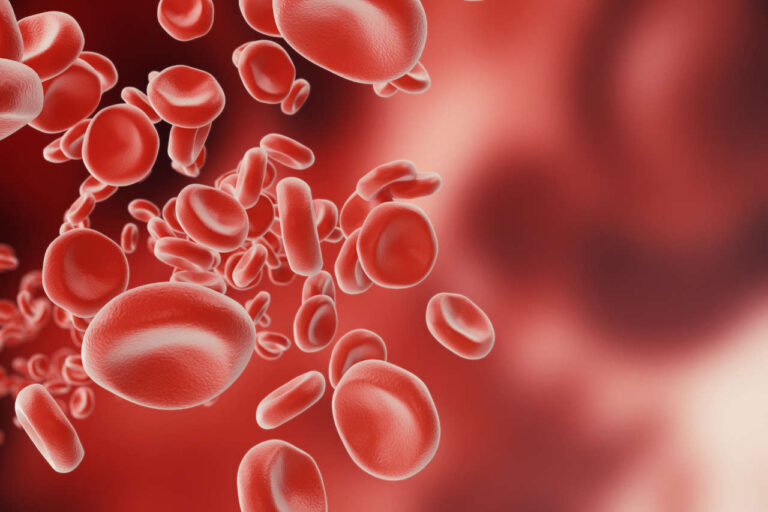
- No current cures exist for small fiber neuropathy, but managing underlying causes can improve or reverse symptoms.
- Treatments for small fiber neuropathy include immunosuppressive drugs, IVIG therapy, pain medications, topical creams, opioids, anti-seizure medications, and antidepressants.
- Emerging treatments such as gene therapy, monoclonal antibodies, and sodium channel blockers show promise for future disease management.
Small fiber neuropathy (SFN) is a chronic condition characterized by damage to the small nerve fibers responsible for transmitting pain, temperature, and autonomic functions.
Since the disease affects the peripheral nerves, managing its symptoms can be challenging. However, effective small fiber neuropathy treatments are available to help patients live a better life.
For the overall care of pain in small fiber neuropathy, various new treatment guidelines suggest the use of antidepressants, opioids, topical therapies, and nonpharmacologic therapies. These approaches aim to reduce pain and manage autonomic symptoms.
In this guide, we will examine the best treatments for small fiber neuropathy based on the underlying causes and emerging symptoms. We will also explore potential cures for small fiber neuropathy to help you gain a better understanding of this complex condition.
Get IVIG Copay Assistance
Speak to a SpecialistThe Approach to Treating Small Fiber Neuropathy
Choosing the right small fiber neuropathy treatments varies depending on the underlying cause. Incorrect treatment can lead to symptoms such as burning or shooting pain and hyperesthesia.
The underlying cause of small fiber neuropathy must be treated together with any related neuropathic pain. When a person manages or receives treatment for the underlying medical condition, their neuropathy symptoms may improve or completely disappear.
Addressing the Underlying Causes of Small Fiber Neuropathy
A wide range of conditions, including diabetes, thyroid dysfunction, and HIV, as well as other diseases, can lead to small fiber neuropathy. In some cases, the diagnosis of small fiber neuropathy can also be deemed “idiopathic.”
However, pain is frequently the most troublesome symptom of the condition, regardless of the underlying cause. Therefore, small fiber neuropathy treatment is tailored to managing the pain symptoms as well as identifying and treating the underlying causes.
This requires individuals with diabetes or other metabolic disorders to manage their blood sugar levels, maintain a healthy body weight, and consume a nutritious, balanced diet.
Regular exercise and quitting smoking can aid in the healing of constricted blood vessels that transport vital nutrients to the nerves.
Is There a Cure for Small Fiber Neuropathy?
Currently, there is no definitive cure for SFN. However, managing the underlying cause can sometimes lead to symptom improvement or even reversal.
Advances in research are ongoing, and new treatments for small fiber neuropathy continue to emerge. In addition, with early diagnosis and personalized treatment plans, patients can alleviate their symptoms and improve their quality of life.
Standard Treatments for Small Fiber Neuropathy

Treatment for small fiber neuropathy (SFN) focuses on managing symptoms and addressing the underlying causes. Symptom management focuses on reducing the pain that is associated with small fiber neuropathy.
The key to improving symptoms and preventing the progression of small fiber neuropathy is etiology-specific treatment. Treatment options are selected based on the patient’s:
- Comorbidities: Other health conditions such as diabetes, autoimmune disorders, or vitamin deficiencies can influence treatment choices and impact overall management strategies.
- Concurrent Medications: Medications already being taken for other conditions, such as anticoagulants and certain antidepressants, may interact with small fiber neuropathy treatments and necessitate careful selection of therapies to avoid adverse effects.
- Safety Profile: The risk of side effects or complications associated with treatments will vary for each patient, guiding clinicians to select the most suitable options while minimizing adverse reactions.
Here is an overview of the best treatment options for small fiber neuropathy.
Immunosuppressive Drugs
While there is no cure for small fiber neuropathy, immunosuppressive drugs may be prescribed to help manage the symptoms of SFN. These medications are recommended for patients with autoimmune diseases. They inhibit the immune system and reduce inflammation.
Examples of immunosuppressive treatments for small fiber neuropathy include:
- Azathioprine
- Cyclosporine
- Methotrexate
- Mycophenolate mofetil
- Corticosteroids (e.g., prednisone)
IVIG Therapy
There is new evidence suggesting that intravenous immunoglobulin (IVIG) treatment for small fiber neuropathy can reduce pain and enhance objective nerve fiber densities on skin biopsies.
Certain patients experiencing SFN with other etiologies may benefit from IVIG treatment, which will allow the patient to experience relief.
A case series of Sjögren syndrome associated with SFN showed persistent improvement following IVIG treatment. In a large cohort study, IVIG also had therapeutic effects on small fiber neuropathy associated with sarcoidosis.
Due to the limited population in clinical trials, it may be challenging to conduct such studies. Future controlled studies will be required to determine whether IVIG treatment is effective in those with autoantibody-associated idiopathic small fiber neuropathy.
Get Your IVIG Dose
At-Home InfusionOpioid or Narcotic-Based Pain Medications
Without a cure for small fiber neuropathy, managing the pain becomes crucial. Opioids and narcotic-based medications are potent agents that can help reduce the pain associated with the disease. Examples of these medications include:
- Morphine
- Methadone
- Oxycodone
- Levorphanol
- Hydromorphone
These drugs work by attaching to opioid receptors in the brain and spinal cord to block pain signals and provide relief.
They are not the best treatments for small fiber neuropathy due to their addictive nature. Therefore, they are typically reserved as second- or third-line options for intense or breakthrough pain when other treatments are insufficient.
Lidocaine Patches and Creams
Lidocaine patches and topical creams are localized small fiber neuropathy treatments that reduce focal neuropathic pain. These products deliver lidocaine directly to the skin over painful areas.
Lidocaine reduces neuronal membrane permeability to sodium ions, which inhibits nerve conduction and reduces pain signals.
They are often used for specific pain zones, especially when pain is confined to a small area. However, their effectiveness may be limited if pain is widespread or not localized. Skin irritation at the site of application may also occur.
Those who show allergic reactions to the ingredients in these topical therapies might need to consider new treatments for small fiber neuropathy.
Anti-Seizure Medications
Anti-seizure treatments are prescribed for neuropathic pain in small fiber neuropathy. Medications in this group include:
- Pregabalin (e.g., Lyrica)
- Gabapentin (e.g., Horizant, Gralise)
While these are not cures for small fiber neuropathy, they can modulate nerve activity by affecting voltage-gated calcium channels. This action reduces the abnormal nerve firing that causes burning, shooting, or tingling sensations.
These medications are often first-line treatments due to their proven efficacy and tolerability. Nonetheless, they may cause side effects such as dizziness, fatigue, or weight gain.
Antidepressants
Antidepressants, particularly tricyclic drugs (TCAs) like amitriptyline and serotonin-norepinephrine reuptake inhibitors (SNRIs) like duloxetine, are widely used for neuropathic pain management. Other small fiber neuropathy treatments in this group include:
- Nortriptyline (e.g., Aventyl)
- Desipramine (e.g., Norpramin)
- Venlafaxine (e.g., Effexor)
Antidepressants influence pain perception by modulating neurotransmitters involved in pain pathways.
They are a cornerstone in neuropathic pain treatment. However, they may take several weeks to show benefits and require careful dosing and monitoring for side effects, especially in the elderly or those with cardiac issues.
New Treatments for Small Fiber Neuropathy
New therapies are showing potential for better management of the condition. Here are some of the most promising emerging treatments for small fiber neuropathy.
Novel Pharmacological Agents
- Sodium channel blockers (e.g., lacosamide targeting NaV1.7 mutations): Reduce nerve hyperexcitability by blocking overactive sodium channels.
- Monoclonal antibodies: Target immune components involved in autoimmune-related SFN to modulate inflammation.
- Lacosamide: Specifically treats NaV1.7 mutations to alleviate pain and nerve hyperactivity.
Gene Therapy and Molecular Targets
- Sodium channel mutations (SCN9A, SCN10A, SCN11A): Genetic variations that cause abnormal nerve signaling in small fiber neuropathy, with treatments aiming to correct these defects.
- Gene Editing: Potential for precise gene editing to correct the underlying genetic causes of the disease.
Receive Care for SFN With AmeriPharma® Specialty
While there is no definitive cure for small fiber neuropathy, many patients find relief through personalized treatment plans. Emerging research continues to explore new treatments for small fiber neuropathy to improve outcomes and reduce complications.
The best treatment for small fiber neuropathy involves a combination of medication, lifestyle modifications, and supportive therapies. If you want to give yourself the best chance at living a full life with this disease, AmeriPharma® Specialty Pharmacy can help.
Our ACHC-accredited specialty pharmacy provides hard-to-find medications and at-home treatments for patients with complex conditions.
Book a call with us today and start receiving small fiber neuropathy treatment with full-service coordination, copay assistance, and 24/7/365 support.
REFERENCES:
- Smith AG, Russell J, Feldman EL, Goldstein J, Peltier A, Smith S, Hamwi J, Pollari D, Bixby B, Howard J, Singleton JR. Lifestyle intervention for pre-diabetic neuropathy. Diabetes Care. 2006 Jun;29(6):1294-9. doi: 10.2337/dc06-0224. PMID: 16732011.
- Pindi Sala T, Villedieu M, Damian L, Crave JC, Pautot V, Stojanovich L, Tervaert JWC, Cherin P, Belizna C. Long-term efficacy of immunoglobulins in small fiber neuropathy related to Sjögren’s syndrome. J Neurol. 2020 Dec;267(12):3499-3507. doi: 10.1007/s00415-020-10033-z. Epub 2020 Jul 1. PMID: 32613444.
- Tavee JO, Karwa K, Ahmed Z, Thompson N, Parambil J, Culver DA. Sarcoidosis-associated small fiber neuropathy in a large cohort: Clinical aspects and response to IVIG and anti-TNF alpha treatment. Respir Med. 2017 May;126:135-138. doi: 10.1016/j.rmed.2017.03.011. Epub 2017 Mar 9. PMID: 28318820.
- Geerts M, de Greef BTA, Sopacua M, van Kuijk SMJ, Hoeijmakers JGJ, Faber CG, Merkies ISJ. Intravenous Immunoglobulin Therapy in Patients With Painful Idiopathic Small Fiber Neuropathy. Neurology. 2021 May 18;96(20):e2534-e2545. doi: 10.1212/WNL.0000000000011919. Epub 2021 Mar 25. PMID: 33766992; PMCID: PMC8205474.













